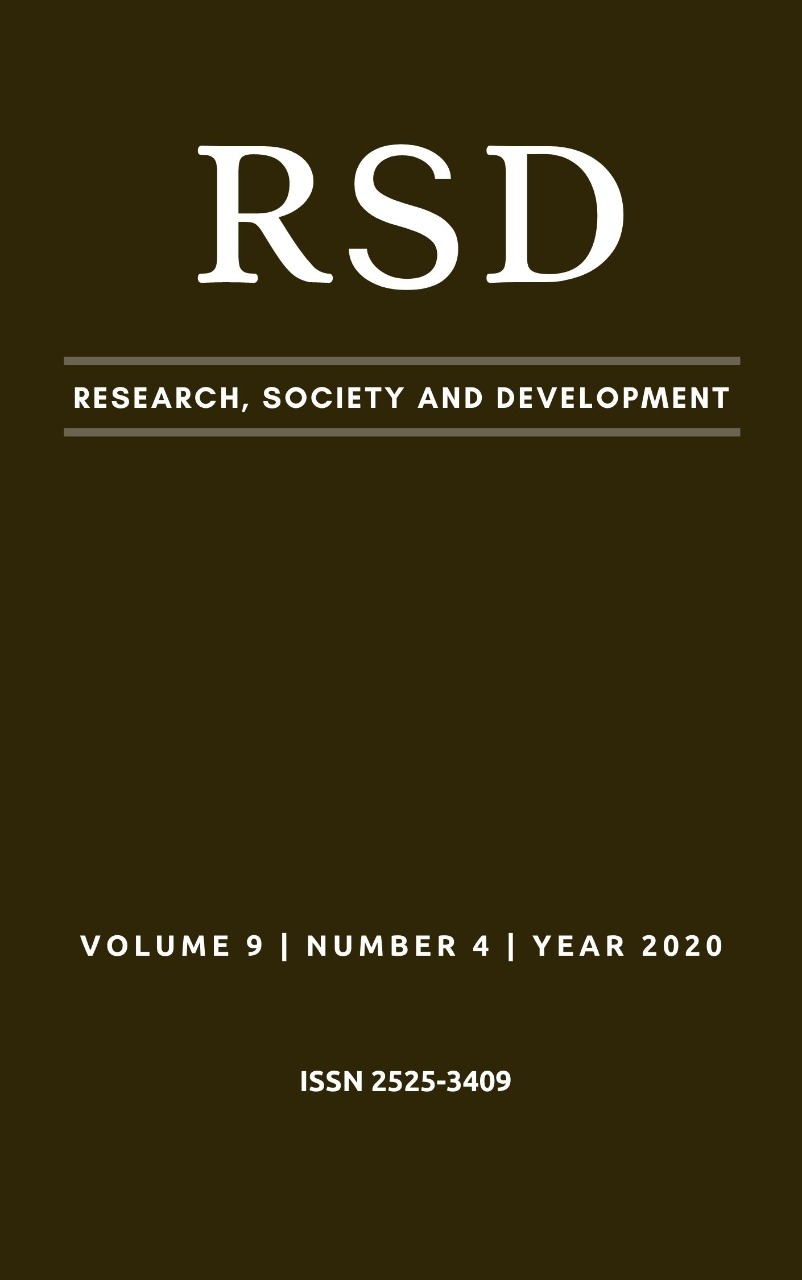Jogos e aprendizado: ensinando propriedades coligativas por meio de um jogo didático
DOI:
https://doi.org/10.33448/rsd-v9i4.2925Palavras-chave:
Material Didático, Propriedades Coligativas, AprendizadoResumo
Atualmente pesquisas voltadas para a área do ensino de Química têm buscado estratégias e ferramentas para melhorar processo de aprendizagem dos alunos. A utilização do lúdico tem sido um dos recursos bastante utilizados por pesquisadores e professores na sala de aula. Ao escolher os jogos como ferramenta avaliativa o professor pode ter uma maior facilidade para identificar as dificuldades dos alunos, além de descontrair a forma de avaliação dos estudantes. O objetivo desse estudo foi desenvolver um jogo didático com a finalidade de ensinar o conteúdo de “propriedades coligativas”, justificando-o pela falta de jogos e pesquisas destinadas ao ensino de Físico-Química de Soluções. Após a construção, o jogo foi aplicado em duas turmas do segundo ano do ensino médio, em duas escolas diferentes. A fim de avaliar a aplicação do jogo fez-se o uso de questionários semiestruturados, os quais continham perguntas sobre a opinião dos alunos acerca do uso de recursos didáticos, como o jogo educativo. Por meio da análise dos questionários respondidos pelos alunos, pode-se comprovar que após a utilização do jogo, houve um progresso na constituição do conhecimento dos mesmos, além de confirmar que eles aprovaram o uso desse recurso no ensino de propriedades coligativas. A partir desta pesquisa conclui-se, que os jogos são uma ótima escolha para ser utilizados nas aulas, sendo válido como recurso didático, pois ele estimula, motiva os alunos, aumenta a concentração e promove a discussões e interações em grupos.
Referências
Cavalcante, E. L. D. & Soares, M. H. (2009). O uso do jogo roles (roleplaying game) como estratégia de discussão e avaliação do conhecimento químico. Revista Eletrônica de Ensenânza de las Ciencias, 8 (1), 255-282.
Cunha, M. B. (2012). Jogos no Ensino de Química Considerações Teóricas para sua Utilização em Sala de Aula. Química Nova na Escola, 34 (2), 92-98.
Feitosa, S. M., Formigosa, M. M., Cordeiro, L. Z. & Santos, D. C. (2019). O ensino da matemática na educação de jovens e adultos em uma escola pública de Altamira, Research, Society and Development, 9 (1), 1-23.
Gardez, E. S. C. (2014). O Lúdico em Ensino de Química: um estudo do estado da arte. Dissertação de mestrado, universidade Federal de Goiânia, Goiás, Brasil.
Pereira, A. W., Fernandes, P. R. D. & Bizerra, A. M. D. (2019). A produção de sabão como recurso pedagógico para o ensino de funções orgânicas. Research, Society and Development, 9 (2) 1-23.
Soares, M. H. (2013). Jogos e atividades lúdicas para o ensino de Química. Goiânia: Kelps.
Teixeira, D. &Apresentação, k. R. S. (2014). Jogos em sala de aula e seus benefícios para a aprendizagem da matemática. Revista Linhas, 15 (28), 302-323.
Wartha, E. J., Kiouranis, N. M. M. & Vieira, R. M. (2018). Jogos educativos e o desenvolvimento de capacidade de pensamento crítico. In: CLEOPHAS, M. & SOARES, M. H. F. B. Didatização Lúdica no Ensino de Química/Ciências. São Paulo: Livraria da Física, 65-77.
Zub, L. (2012). O lúdico como motivador da aprendizagem em Química para alunos da 1º série do ensino médio do colégio estadual João XXIII em Irati-Paraná. Dissertação de Mestrado, Universidade Tecnológica Federal do Paraná, Ponta Grossa Paraná, Brasil.
Downloads
Publicado
Edição
Seção
Licença
Autores que publicam nesta revista concordam com os seguintes termos:
1) Autores mantém os direitos autorais e concedem à revista o direito de primeira publicação, com o trabalho simultaneamente licenciado sob a Licença Creative Commons Attribution que permite o compartilhamento do trabalho com reconhecimento da autoria e publicação inicial nesta revista.
2) Autores têm autorização para assumir contratos adicionais separadamente, para distribuição não-exclusiva da versão do trabalho publicada nesta revista (ex.: publicar em repositório institucional ou como capítulo de livro), com reconhecimento de autoria e publicação inicial nesta revista.
3) Autores têm permissão e são estimulados a publicar e distribuir seu trabalho online (ex.: em repositórios institucionais ou na sua página pessoal) a qualquer ponto antes ou durante o processo editorial, já que isso pode gerar alterações produtivas, bem como aumentar o impacto e a citação do trabalho publicado.


